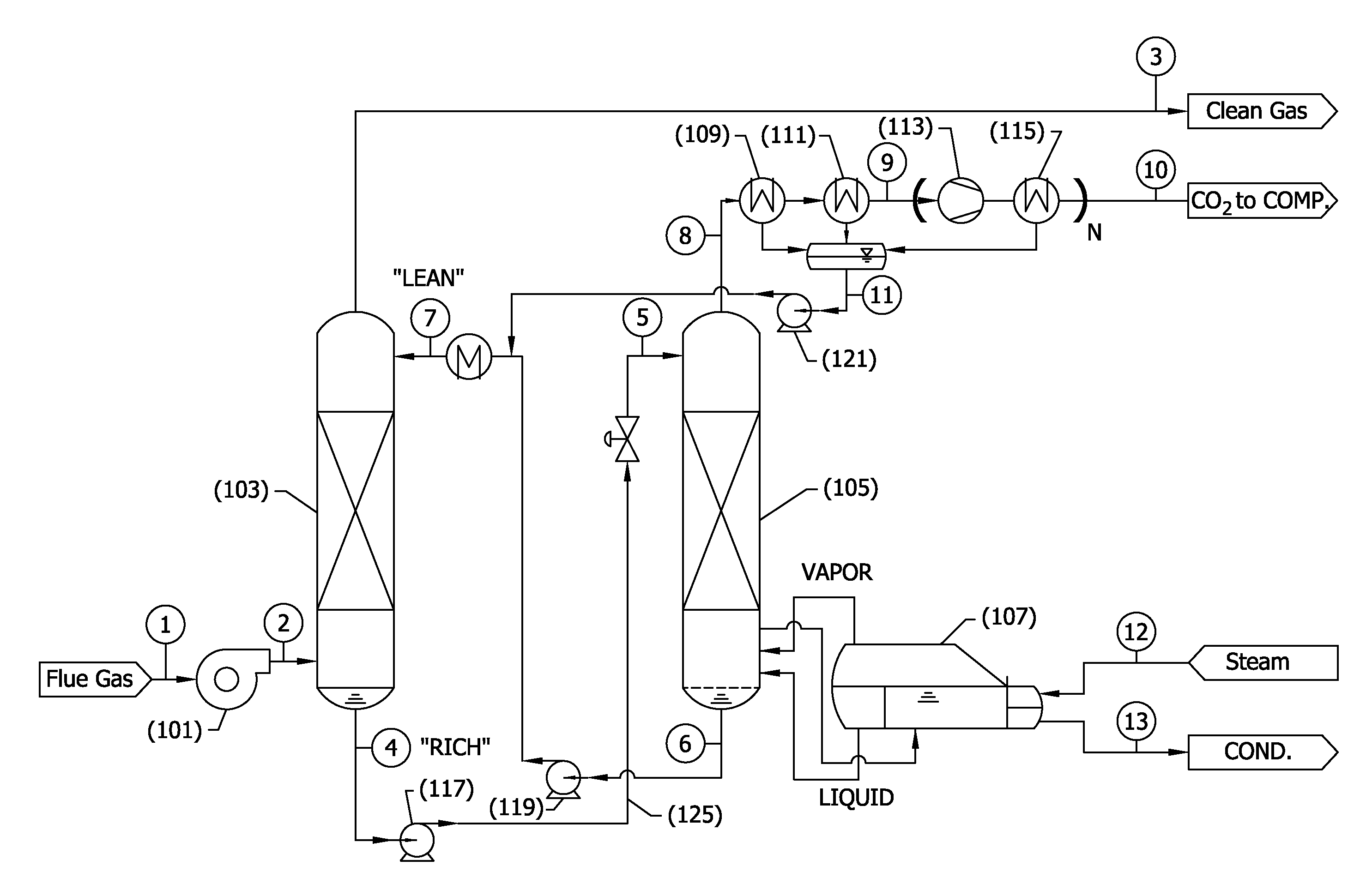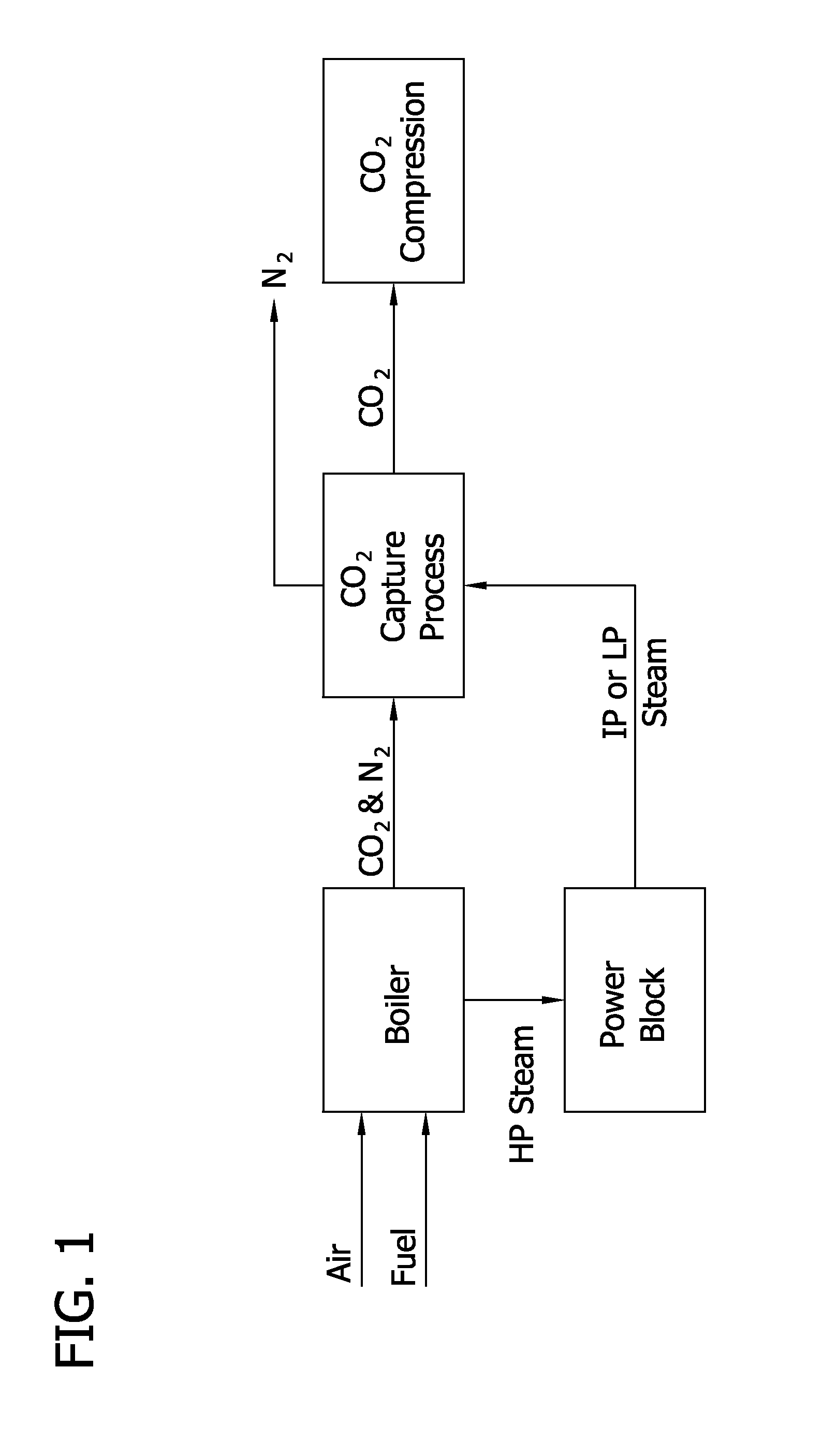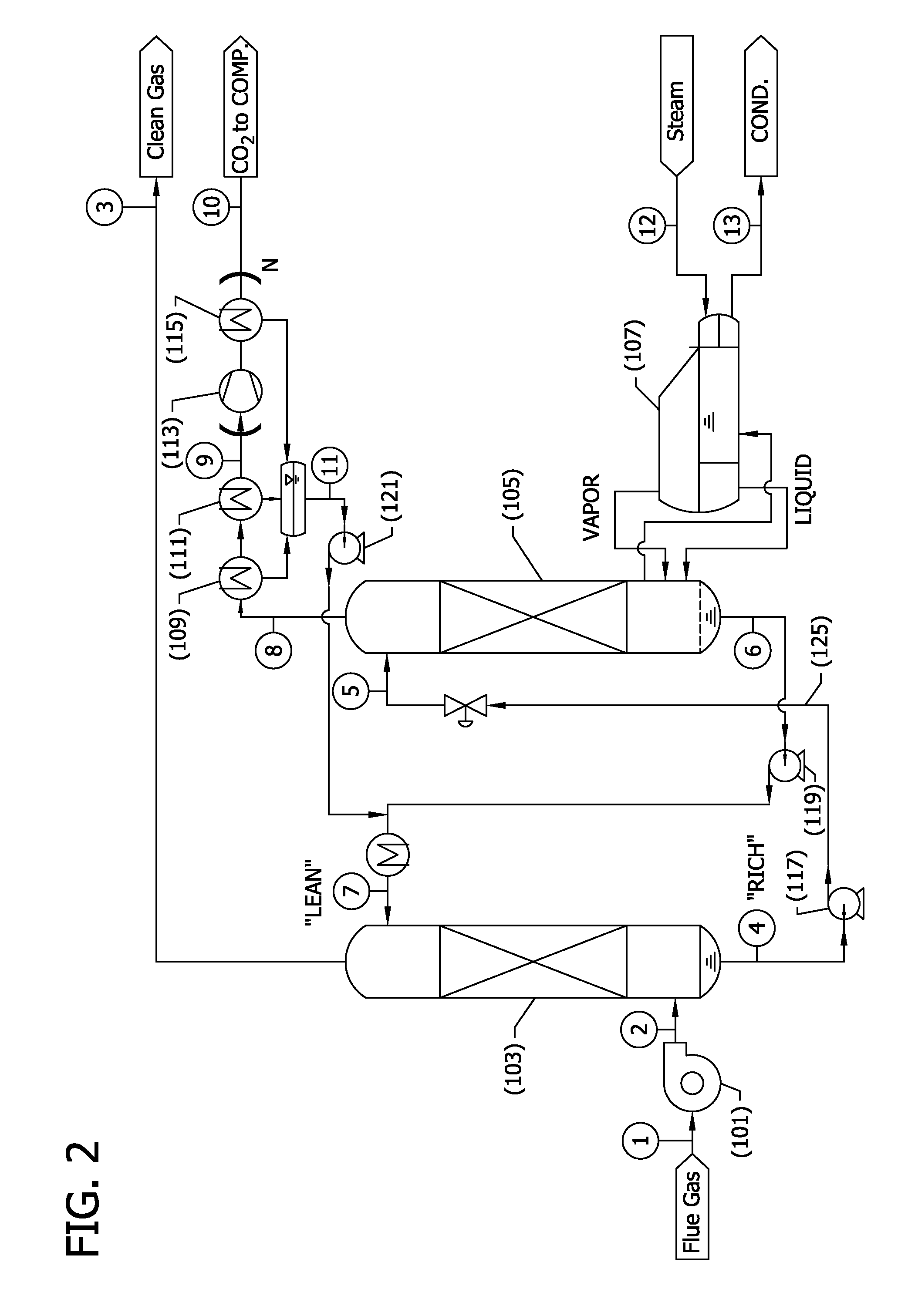Processes and methods for low energy carbon dioxide capture
a carbon dioxide and low energy technology, applied in the field of low energy carbon dioxide capture processes and methods, can solve the problems of not being superior to conventional amine technology at typical regeneration pressure and temperature, and the reaction kinetics are significantly slower than those of primary amine-based
- Summary
- Abstract
- Description
- Claims
- Application Information
AI Technical Summary
Benefits of technology
Problems solved by technology
Method used
Image
Examples
example 1
[0123]Preliminary modeling was conducted for a CO2 capture process corresponding to the flow sheet depicted in FIG. 2 integrated into a coal combustion, supercritical steam, power plant as shown in FIG. 3, and as described in detail above.
[0124]Generally, FIG. 3 illustrates how a CO2 capture system as described herein might be integrated into a coal fired steam power plant. Unique features of the integration are disclosed to minimize parasitic power and minimize capital cost in a retrofit application where regeneration steam is collected at 201 entirely from the bottom of one side of the low-pressure steam turbine doublet—in contrast to the conventional split of steam flow at the inlet of the low pressure turbine 203. The figure shows the main plant condenser 207 located immediately after the reboiler 205 to aid in drafting low pressure steam through the reboiler steam tubes. As an alternative, a separate condenser could have been located in close proximity to the reboiler. Addition...
example 2
[0136]The model data presented in FIG. 6 illustrate the significant changes in saturated steam-to-power efficiency as a function of reboiler temperature. The data markers on the plot illustrate potential for 70% reduction in parasitic power for a 60° C. reboiler (70° C. steam) compared to a 150° C. reboiler (160° C. steam), for the same reboiler heat duty. Moreover, to the extent that reboiler heat duty can also be lowered considering a preferred solvent selection, as in this invention, then the parasitic power will be further reduced. The steam to power efficiency is approximated by 90% of ideal Carnot heat cycle efficiency, assumes a minimum reference temperature of 40° C. (313 K), and assumes a steam saturation temperature that is 10° C. above the reboiler temperature.
example 3
[0137]Process modeling and cost estimation for CO2 capture from flue gas generated by a supercritical steam, pulverized coal, power plant was performed to evaluate the benefits of the advanced process flow sheet disclosed herein with 20% w / w K2CO3 and 34% w / w KDMG compared to 30% w / w MEA. To separate the roles of solvent and flow sheet in reducing equivalent work the corresponding cost of CO2 capture, the energy and cost performances were compared to the use of a conventional flow sheet with ambient pressure regeneration and with catalyst present only in the absorber, a conventional flow sheet with vacuum stripping and catalyst present only in the absorber, and the advanced flow sheet disclosed in FIG. 2 and described in detail above, which features a biocatalyst circulating throughout the entire liquid solvent loop.
[0138]FIG. 7 presents the equivalent work that resulted from detailed energy balance modeling of various process flow sheets and solvents cases defined in the list below...
PUM
| Property | Measurement | Unit |
|---|---|---|
| temperature | aaaaa | aaaaa |
| temperature | aaaaa | aaaaa |
| temperature | aaaaa | aaaaa |
Abstract
Description
Claims
Application Information
 Login to View More
Login to View More - R&D
- Intellectual Property
- Life Sciences
- Materials
- Tech Scout
- Unparalleled Data Quality
- Higher Quality Content
- 60% Fewer Hallucinations
Browse by: Latest US Patents, China's latest patents, Technical Efficacy Thesaurus, Application Domain, Technology Topic, Popular Technical Reports.
© 2025 PatSnap. All rights reserved.Legal|Privacy policy|Modern Slavery Act Transparency Statement|Sitemap|About US| Contact US: help@patsnap.com



